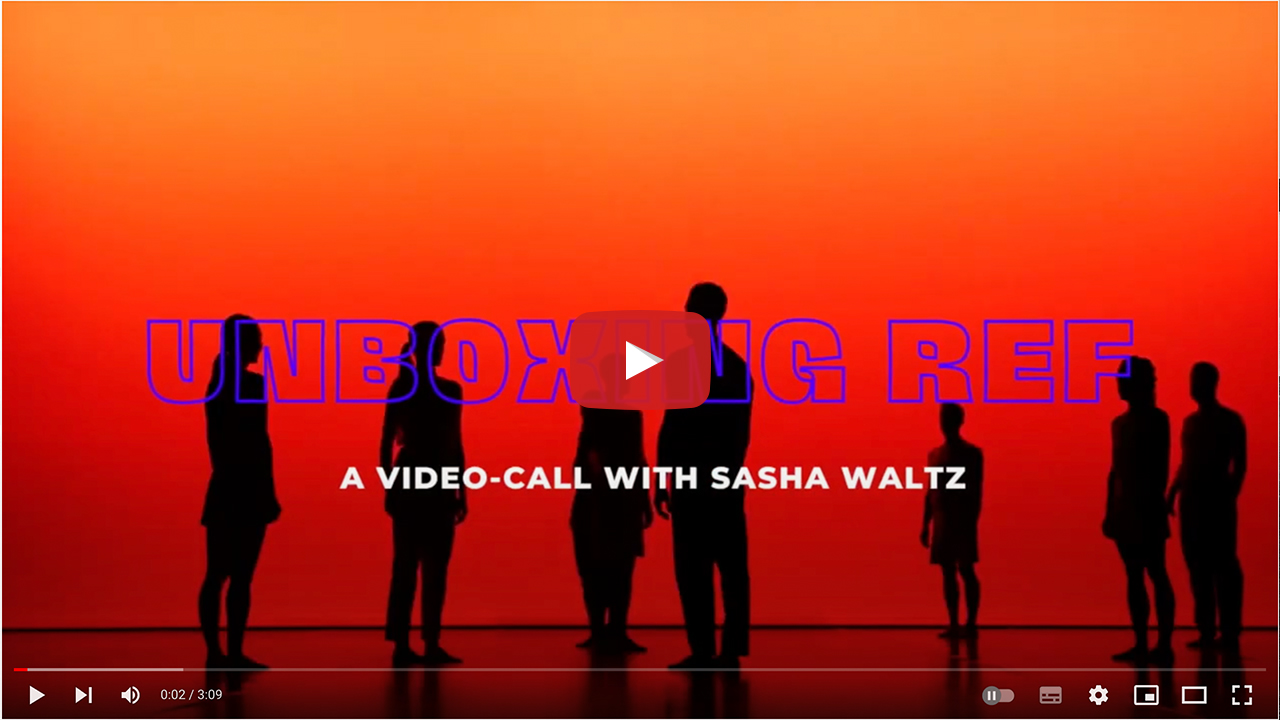ITA/ENG
La newsletter di questa settimana inizia con un saluto e un grazie ad un gigante della scena teatrale del Novecento che con i suoi percorsi di dialogo, di viaggio, di incontro tra culture ha attraversato indelebilmente le teorie e le pratiche della scena, segnando generazioni di spettatori, di studiosi, di pensatori e di critici e anche un pezzo della storia del REF. Era il 1990 quando Romaeuropa incontrava per la prima volta Peter Brook omaggiando il suo Mahabharata («avevo visto lo spettacolo per la prima volta alla Carrière de Boulbon nel luglio del 1985 assieme e grazie a Monique Veaute» ricorda il Direttore Generale e Artistico Fabrizio Grifasi)  in una suggestiva proiezione filmica di mezzanotte con l’obbiettivo di completare il viaggio che quella edizione del festival aveva compiuto intorno allo spettacolo tradizionale del sud-est asiatico. Pochi anni dopo sarebbero stati pubblicati in Italia alcuni dei testi teorici più conosciuti del regista e drammaturgo inglese, dal 1974 alla direzione dello storico Théâtre des Bouffes du Nord a Parigi: “La porta aperta”, “Lo spazio vuoto”, “I fili del tempo. Memorie di una vita”. Testi che nutrono tutte le sue creazioni passate per il festival: lo shakespeariano “Love is my sin” (2009 – Teatro Palladium), l’indimenticabile “Un flauto magico da Mozart” (2011 – Teatro Argentina, in corealizzazione con il Teatro di Roma) “The Suit” (2013 – ancora al Palladium), ispirato all’omonimo romanzo dello scrittore sudafricano Can Themba e “The Prisoner” (2018 – Teatro Vittoria) ultimo elegante spettacolo presentato al REF diretto insieme alla sua storica collaboratrice Marie-Hélène Estienne con un cast multietnico per affrontare i temi della punizione, della giustizia e del crimine. Ma oltre alla pratica scenica, al mestiere dell’attore e alla sua relazione con lo spettatore, ereditiamo alcune delle più importanti riflessioni sullo scambio e il dialogo culturale, sulla possibilità dell’arte, del rituale teatrale, della danza, delle cerimonie di creare relazioni tra culture e popoli. Una precisa idea del mondo; di come, insieme ai suoi collaboratori e ai suoi spettatori, lo aveva immaginato; di come, oggi più che mai, desideriamo immaginarlo ancora.

REF Unboxing torna a scoprire la danza internazionale che animerĂ la settimana inaugurale del festival.
Sono due gli spettacoli, che nella Cavea dell’Auditorium Parco della Musica si confronteranno con due grandi compositori minimalisti attraverso il linguaggio coreografico. Parliamo di Anne Teresa de Keersmaeker che il 13 e il 14 settembre porterà in scena Drumming Live, sulle note dell’omonima composizione firmata da Steve Reich ed eseguita live da Ictus Ensemble e di Sasha Waltz che, sempre in cavea, con la sua compagnia, il 17 e il 18 settembre si confronterà con In C, di Terry Riley.
Due spettacoli presentati con il supporto di Dance Reflections by Van Cleef & Arpels, il progetto con il quale la maison promuove la danza contemporanea e di cui Romaeuropa è partner per il primo anno.
Per REF Unboxing abbiamo raggiunto Sasha Waltz in video-call per farci raccontare il suo lavoro.
«La partitura di In C, scritta nel 1964 da Terry Riley, ha rappresentato l’inizio della musica minimalista. Mi colpisce molto il fatto che sia stata scritta su solo due pagine e strutturata in 53 figure musicali. Ho pensato di guardare me stessa, le danzatrici e i danzatori, come fossimo dei musicisti e di creare lo spettacolo con questo spirito. Ho quindi creato una partitura per i performer che è un mix di coreografia e di improvvisazione. Abbiamo trasformato le sue 53 figure in 53 figure coreografiche. Sono eseguite in scena in ordine dalla prima all’ultima. Le danzatrici e i danzatori possono passare da una figura all’altra e ripetere la stessa figura quante volte vogliono. Hanno solo un’unica regola: non possono tornare indietro ad una figura già utilizzata ma solo procedere in avanti seguendo il flusso generale del gruppo. Questo significa che in scena è necessario ascoltarsi reciprocamente, seguire un flusso generale ma che, allo stesso tempo, ogni singolo interprete ha l’enorme libertà di decidere come deve andare avanti la piéce» ci ha raccontato la coreografia.
Ed effettivamente In C appare come una sfida attraverso la quale la sua compagnia, più volte ospite del REF, vuole esplorare le potenzialità di una produzione artistica flessibile e caratterizzata dallo scambio internazionale. «Lo spettacolo ha debuttato inizialmente online. Era impossibile portarlo in scena a causa dei lockdown. Oggi lo presentiamo sulle scene di tutto il mondo» continua Waltz «Questi differenti passaggi hanno rappresentato un percorso di crescita. In C non prevede solo un gruppo fisso di danzatori ma insegniamo costantemente ad altri performer il suo vocabolario e lo lasciamo crescere nella condivisione. Abbiamo costruito una grande comunità di danzatrici e danzatori, abbiamo iniziato a trasmettere le frasi coreografiche ai bambini, alla gente che ama danzare ma che non lo fa professionalmente. Percepisco In C come una sorta di lingua che possiamo condividere. Ogni performance che va in scena è quindi unica: ha un’unica combinazione di danzatrici e danzatori che si ritrovano in uno spazio per interpretare la sua partitura (…) Questa metodologia credo sia una possibile risposta al presente. Si realizza un sistema realmente democratico, costituito da regole che pongono ogni interprete sullo stesso piano: ognuno può decidere se guidare la coreografia o seguire il flusso, il gruppo può allora unirsi e plasmare insieme lo spazio. La pièce può funzionare solo se ogni singolo elemento è in ascolto dell’altro, se davvero si collabora insieme. E questo aspetto mi è sembrato importantissimo durante il Covid in cui ci chiedevamo quale fosse l’equilibrio tra libertà individuale e responsabilità nei confronti degli altri, della società . Ho cercato di rispondere a queste domande in maniera molto giocosa».
ASCOLTA SU SPOTIFY IN C DI TERRY RILEY NELL’ESECUZIONE DI BANG ON A CAN ALL-STARS UTILIZZATA NELLO SPETTACOLO:
ENG
This week’s newsletter begins with a greeting and thanks to a giant of the twentieth century theatrical scene, who has indelibly crossed the theories and practices of the scene, marking generations of spectators and critics but also the history of REF. It was 1990 when Romaeuropa met Peter Brook for the first time paying homage to his Mahabharata in a suggestive midnight projection with the aim of completing a journey that such edition of the festival dedicated to Southeast Asia traditional performance: «I saw the performance for the first time at the Carrière de Boulbon in July 1985 with Monique Veaute» recall the General and Artistic Director Fabrizio Grifasi.  A few years later some of the best-known theoretical texts of the English director and playwright – from 1974 at the direction of the historic Théâtre des Bouffes du Nord in Paris – would be published in Italy: “The Open Door”, “The Empty Space”, “Threads of time. A memoir”. Texts that nourished all his creations hosted by the festival: the Shakespearean “Love is my sin” (2009 – Palladium), the unforgettable “A Magic Flute” (2011 – Argentina Theater, in coproduction with Teatro di Roma) “The Suit” (2013 – again at the Palladium) show inspired by the novel of the same name by the South African writer Can Themba and “The Prisoner” (2018 – Teatro Vittoria), the last elegant show presented at the REF directed together with his historical collaborator Marie-HĂ©lèene Estienne with a multi-ethnic cast to address the themes of punishment, justice, and crime. But in addition to the stage practice, the profession of the actor and his relationship with the spectator, we inherit some of the most important reflections about cultural exchange and dialogue, about the possibility of the arts, theatrical ritual, dance, and ceremonies to create relations between culture and peoples. A precise idea of the world; how, together with his spectators, he had imagined it and how, today more than ever, we would like to imagine it again.
REF Unboxing returns to discover the international dance that will animate the opening week of the festival.
There are two shows that will confront two great minimalist composers through choreographic language at the Cavea of Auditorium Parco della Musica. We are talking about Anne Teresa de Keersmaeker that, on September the 13th and 14th,will present Drumming Live on the notes of the homonymous composition signed by Steve Reich and performed live by the Ictus ensemble, and about Sasha Waltz who with her company, on the 17th and 18th is going to build a dialogue with In C by Terry Riley.
These two shows are presented with the support of Dance Reflections by Van Cleef & Arpels, the project with whom the maison promotes contemporary dance and for the first time partner of Romaeuropa.
For REF Unboxing we reached Sasha Waltz on a video call to discover something more about her work. Watch the video here.
 «The score of In C, written in 1964 by Terry Riley, represented the beginning of minimalist music. I am very struck by the fact that it was written on only two pages and structured in 53 musical figures. I thought of looking at myself and the dancers as musicians and to create the show with this spirit. I created a score for the performers that is a mix of choreography and improvisation. We have translated the 53 figures of the music into 53 choreographic figures. These are performed on stage in order from the first to the last one. Dancers can go from one figure to another and repeat the same figure as many times as they want. They have only one rule: they cannot go back to a figure already used. They have to proceed forward following the general flow of the group. This means that on the stage they have to listen each other and to follow a general flow. But, at the same time, every dancer has the enormous freedom to decide how the piece should go forward”, the choreographer told us. And actually, In C appears as a challenge through which her company, several times a guest of the REF, wants to explore the potential of a flexible artistic production and international exchange. «We performerd In C for the first time online. It was impossible to bring it to the stage due to the lockdowns. Today we present it on stage all over the world» continues Waltz «These different passages have a growth path. In C not only provides a fixed group of dancers but we constantly teach to other performers its vocabulary and let it grow in sharing. We have built a large community of dancers, we have transmitted the choreographic phrases to children, to people who only love to dance. I perceive In C as a kind of language that we can share. Each performance that is staged is therefore unique: it has a unique combination of dancers who find themselves in a space to interpret its score (…) I believe this methodology is a possible answer to the present. It’s a truly democratic system, consisting of rules that place each performer on the same level: everyone can decide whether to govern the choreography or follow the flow, the group can then unite and shape the space together. The piece can only work if every single interpreter is listening to the other, if they really collaborate. And this aspect seemed very important to me during Covid when we asked ourselves what the balance between individual freedom and responsibility for the others and for the society. I tried to answer these questions in a very playful way».
LISTEN ON TERRY RILEY’S SPOTIFY IN C IN THE BANG ON A CAN ALL-STARS PERFORMANCE USED IN THE SHOW.

















